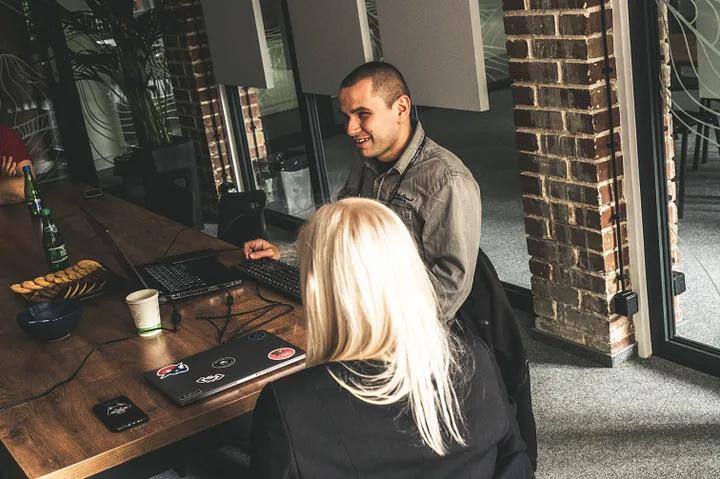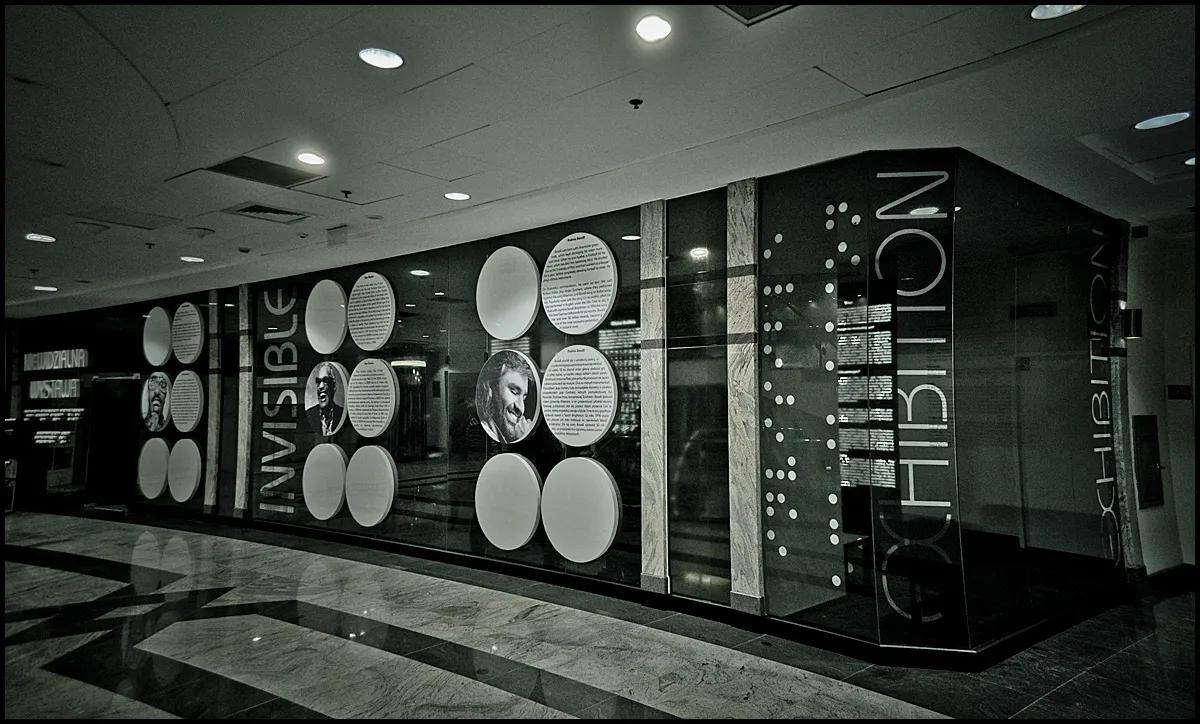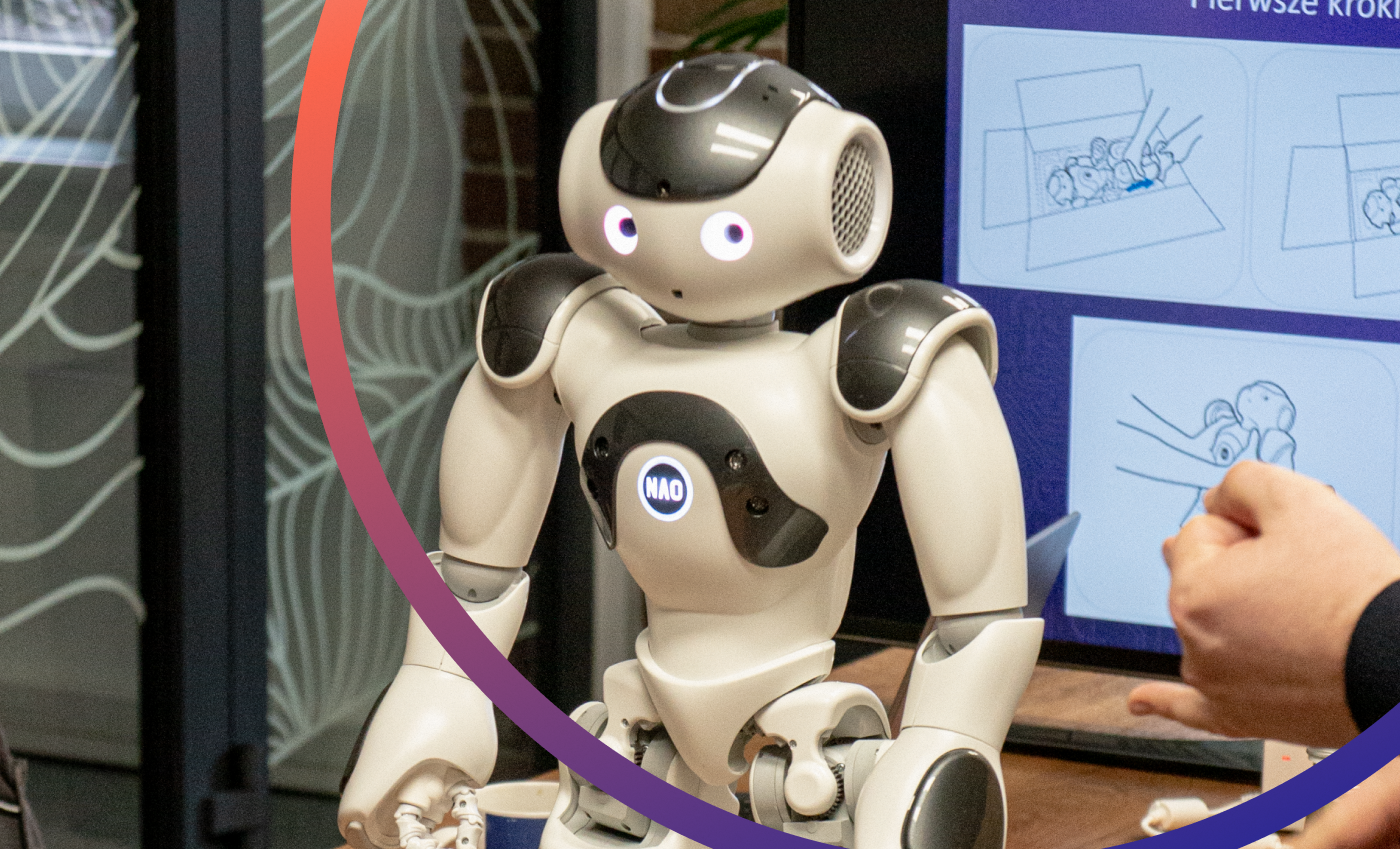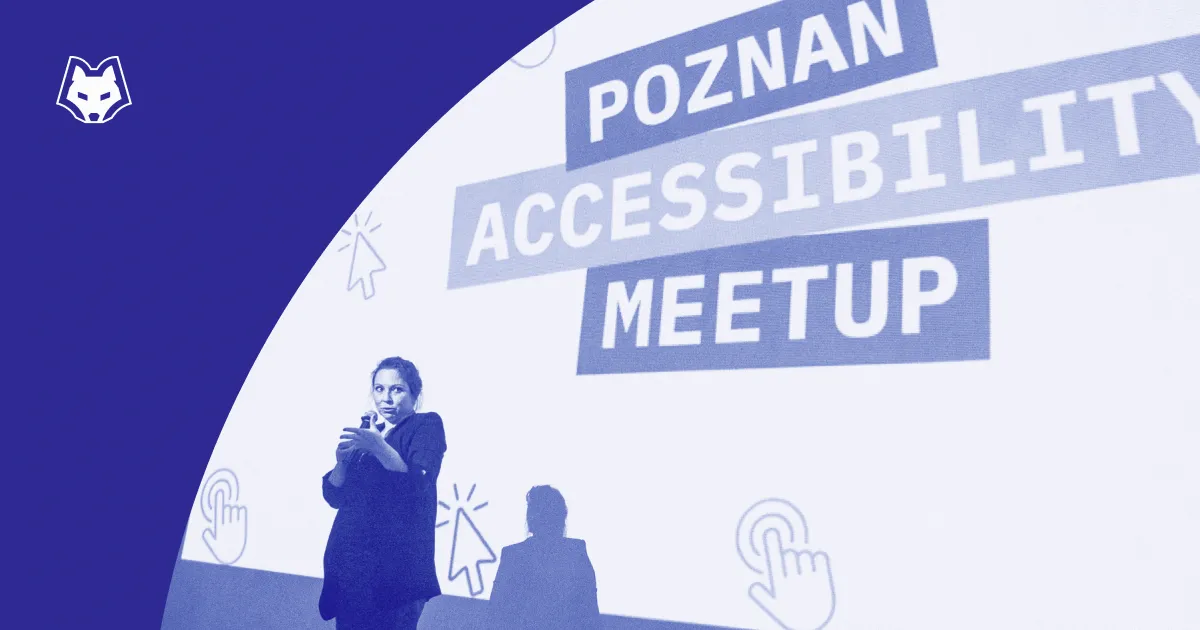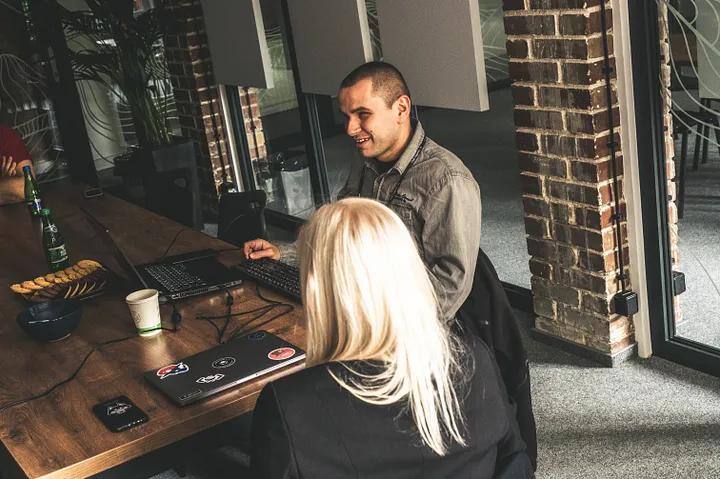
Can you recall the last time you found yourself on a beach, only to be interrupted by a phone call or text message? You desperately tried to check it, but the glaring sun obstructed your vision. Squinting your eyes and seeking shade, you exerted considerable effort until you finally managed to read the message. This experience, though inconvenient, pales in comparison to the daily obstacles faced by many individuals when utilizing technology. To gain a deeper understanding of the challenges faced by visually impaired individuals, we sat down with Przemek, a man with visual impairment, to discuss his experiences and how he navigates the world of technology.
Understanding Vision Impairment: Exploring the Condition and Its Impact
Before we get to the interview itself, we want to explain a few things to people who are not very familiar with the topic. Vision Impairment means that a person’s eyesight can’t be corrected to a “normal” level. There are two possible causes.
- Loss of visual acuity, which means that the eye doesn’t see objects as clearly as a healthy eye.
- Loss of visual field, which means that the eye can’t see as wide an area as a healthy eye.
Most people who are “blind” have at least some usable vision that can help them move around in their environment and do things in their daily lives. -The University of Pittsburgh, Department of Ophthalmology’s website
The International Classification of Diseases (ICD) divides vision impairment into two separate groups: distance and near-presenting vision impairment. Additionally, the distance vision impairment has 4 levels: Mild, Moderate, Severe, and Blindness.
Why do we start with that explanation? It’s crucial for you to understand that there is a broad spectrum of people affected by this condition. In fact, globally, there are 2.2 billion people affected by some kind of vision impairment. What is even more astonishing is the economic impact of that.
Vision impairment poses an enormous global financial burden, with an estimated annual global productivity loss of about 411 billion USD purchasing power parity. This figure far outweighs the estimated cost gap of addressing the unmet need of vision impairment (estimated at about 25 billion USD). -World Health Organization
The Interview with Przemek Kielar
Hi Przemek, please tell us something about yourself, so we can understand your experience even better.
Hi! Well, let’s start from the very beginning. I can’t see since the day I was born, because of that, sounds play a huge role in my life. Sounds help me to navigate and to localize myself in the surroundings, they are also a big part of my job. I work as an audiobook editor — that’s my main thing, but I’m active outside that as well. I play the organs in my church, and sometimes I also help you guys with accessibility testing. I am also a guide in Niewidzialna Ulica, a place where you can experience a street just the way visually impaired people see it. It’s fascinating because you are facing a few tasks like taking a tram or crossing a busy road. Everything happens in complete darkness.
That sounds interesting, experiencing the world the way you do. Walking the street and trying to figure it out. But that’s the physical world. How do you see things that are digital? How do you use your computer? Do you have any tools for that?
Well, you’re right. The Digital world is different. In order to work with a computer, I have to use a thing that’s called a screen reader. It tells me what is visible on the screen. It is actually reading it to me, word by word. Without it, I and other blind people would not be able to use a computer. Personally, I use either an NVDA reader or a Jaws reader. The first one is a free-of-charge, open-source system. It has a lot of useful plug-ins and upgrades. E.g. there’s one plug-in that allows me to use the audiobook editing software, which as you can imagine is crucial in my job. The Jaws reader is also an excellent tool. Definitely a more technologically advanced one.
Can you tell me, step-by-step, how you do simple tasks on your computer? How do you open certain systems?
It’s not that different from yours, I suppose. The only thing I have to do differently is I have to listen all the time to the voice of the screen reader. On a computer, I use the keyboard’s hotkeys and arrow keys. I navigate through the icons. The reader tells me what has been picked, and then I just click enter. Blind people don’t really use the touchpad or computer mouse. We can’t see the cursor, so it’s useless.
So any operation that requires using a cursor, like opening a collapsible, fly-out menu, is almost impossible in your case?
Well, I’d say so. It’s not accessible at all and almost impossible for me to use.
What is the most problematic thing while surfing the Internet, then?
As you’ve mentioned before, weird easily collapsible menus, but also pop-ups. Frequently I’m not even aware that they are there. It gets really tricky, I can’t find the cross to close it, so I have to exit the website. I really don’t like updates, upgrades and changes in design. If it happens, I need to “learn” the whole website or app from scratch.
It’s annoying when the speech synthesizer gets really slow. It means that the website is overloaded with information or is simply not adjusted accordingly. Sometimes when I do online shopping I click “Add to the cart”, and then when I’m at the checkout it turns out it is not there. Then I have to repeat the whole process.
What about public administration websites? According to the law, they should be accessible, but are they?
Most of them are accessible, but some issues still occur. For instance, I had this situation many times, when I try to fill out an online application and I get through the whole document, and then at the very end, there is something wrong. Send button is not responding or something similar. It makes me go through the application again. Sometimes many times. It takes time, and that is something I need you to understand.
That it takes time?
Precisely! For people with vision impairment, learning new websites, apps and programs take more time than for people who see normally. I can’t tell you exactly how long it takes, because it depends on the complexity of the website, but what’s great is that visually impaired people are a community. If there’s a system, app or website, I bet there’s a person who can explain to you how to use it.
Would you say that some visually impaired people, especially the older generations, don’t use computers and smartphones because it is simply too difficult for them?
I am 30 years old. For my generation, technology is not a problem, it’s a solution. The fact that I’m visually impaired makes it a bit more difficult, or maybe just different. Obviously, the older you are, the more difficult it is to use technology, but I guess that’s the same for “normal” people. As I told you, we are a community. If there’s something new and interesting, something that can help us we sit down together, we test it to see how it works, and then we use it. Sometimes we even send emails to the developers of the system if it is not working right. It’s a dull and ungrateful “job” to do, but I believe it’s the right thing to do. To make it usable for other visually impaired people. The developers frequently are not aware that their system is not accessible to us.
I know from my own experience that elderly people prefer in-person help when learning new technologies. Is there a way to do it for the visually impaired as well?
A couple of years ago when a blind person bought a computer, it was co-financed by the government. It was possible to get a specialist to your home, and that person showed you step-by-step how to use a computer. When I bought my first PC, I had a man come to my house and show me how to use it. As far as I know, that’s still an option. I think it’s a good start for people who have problems with technology.
I think so, too. Now, let’s get back to the screen reader, then. Is there a similar tool for smartphones? Is it any different from the desktop one?
Yes, there are separate systems that work on mobile devices. The one I’m using requires remembering a whole sequence of gestures and tapping schemes. I’ll tell you how it works. When it’s turned on, and I touch an app icon once, it reads the name of the app. If I tap the second time, then the app opens.

Okay, it doesn’t sound that complicated. What are your favorite apps then?
I might surprise you with the answer, but I use most of the apps you’re using too. Obviously, I call and text people, I use browsers, but it’s way less convenient than a desktop browser. I watch YouTube videos and listen to music. Weirdly, using the YouTube app is way easier and more intuitive for me than the desktop version. I use navigation as well, but not Google Maps as most people do.
Why not? Is it not accessible?
The problem is in the accuracy of the app. With Google Maps, I can go through crossroads and the app tells me that I’m just approaching it. That information is vital and can cause a lot of confusion. I use apps like Loadstone, Lazarillo or WeWALK. They are built for blind people and way more accurate.
I see. When it comes to using smartphones, are there any annoying things too?
Using the phone is simple if you personalize it and adjust it to your vision impairment. You just need to remember specific gestures that you need to navigate on the screen. The setup of the phone is more tricky. If you have an Android phone, you need someone with good vision to turn on the speech function. As soon as it’s turned on, you can adjust it and change the settings yourself. On the other hand, Apple made it straightforward with their iPhones. You just have to know a specific shortcut and that’s it.
When it comes to annoying things, I would say using any browser is tough. I don’t have a physical keyboard, so I cannot operate with shortcuts, although there are some helpful shortcuts like links, headlines and keywords filtration. It takes much more time to navigate.
Is there a way to use Braille on your phone?
Yes, there is. If you want to write a text message, the whole screen turns into a keyboard, and we can write in Braille. The downside of that is that you need two hands to do that.
Can we get back to online shopping? I think your insight might be captivating. Can you get us through the process?
I mainly buy books and press, so let me answer from that perspective. When I want to buy something, I simply google the title I wish to buy. Then I just click on the first result I get, and I try to buy the thing I want. If I succeed, that’s great. If I don’t then I just get to the second result, and so on. The process itself is not complicated at all. I enter a website. The screen reader tells me the elements of the website. I look up the product, I read the description, I add it to the cart and I do the checkout.
What are the most common issues then?
The most issues I encounter while trying to pay for the order. The redirection is not working properly. I usually solve this by changing the browser and repeating the whole process again. I think I gave up on the process only once in my life. In our community, there are some shops that are considered inaccessible. We avoid them as much as we can.
In your opinion, what should a good and accessible shop look like?
A good online shop has good, detailed product descriptions. It also has correctly marked fields, buttons, links and forms. A good shop is an intuitive shop. The messages, errors and other communications should be displayed in intuitive spots, not at the bottom or beginning of the page.
For me personally, the first thing is the most important one. The product description. Sometimes I have to look up a certain product in a few stores because the description is not made right. Fortunately, it has changed a lot in recent years.
What is a good product description in your opinion?
Each product’s description should be easily readable. It means that it should have lists and bullet points, and small paragraphs instead of big blocks of text. Don’t forget about headings, subheadings and alt text. It allows us to navigate and understand the description better and faster.
If you can add the measurements and weight of a product. Tell us what material it is made of. Don’t forget to mention colours and sizes if it’s available in many. Explain the product’s potential usage. We can’t see the pictures of you using the product, and some of them may be pretty confusing.
One that is not that obvious is — to be consistent with descriptions. With all of your products. It’s really important when we have to compare two things.
Do you think it’s because of the pandemic?
I don’t think that COVID-19 made websites more accessible. The only exception would be the public administration websites. Those have changed a lot in the last 2–3 years. When it comes to online shops or any other websites, to be fair, I didn’t notice any difference. Obviously, there are some that are brilliant, but there are quite a lot that have nothing to do with accessibility.
Could you tell us what are they missing, then?
In most cases, on the most important thing. Simple navigation. Some websites don’t even have that. The website has to be divided into titles, headlines and so on. The graphic elements like pictures should have alt texts. Please, don’t put any important info on the graphic and if you do, make sure it’s also in the text. The screen reader won’t read the graphic itself. It reads the alternative text only. I have to say that I see a huge improvement in the last 10 years. Visually impaired people can do much more now, and that is very comforting.
Summary
Only about 2.6% of the websites are considered accessible. According to ADA Digital Accessibility Lawsuit, in the USA in October 2022 there were 171 website accessibility lawsuits filed. What’s the reason? Lack of Accessibility standards on the website. It’s only a matter of time before similar lawsuits will happen in Europe. The fact is that European Union has already made WCAG 2.1 (Web Content Accessibility Guidelines) obligatory for public institutions. Likely it will be a thing for every website. If you want to know more about Digital Accessibility, read more on the A11y website or check the WCAG 2 page.

